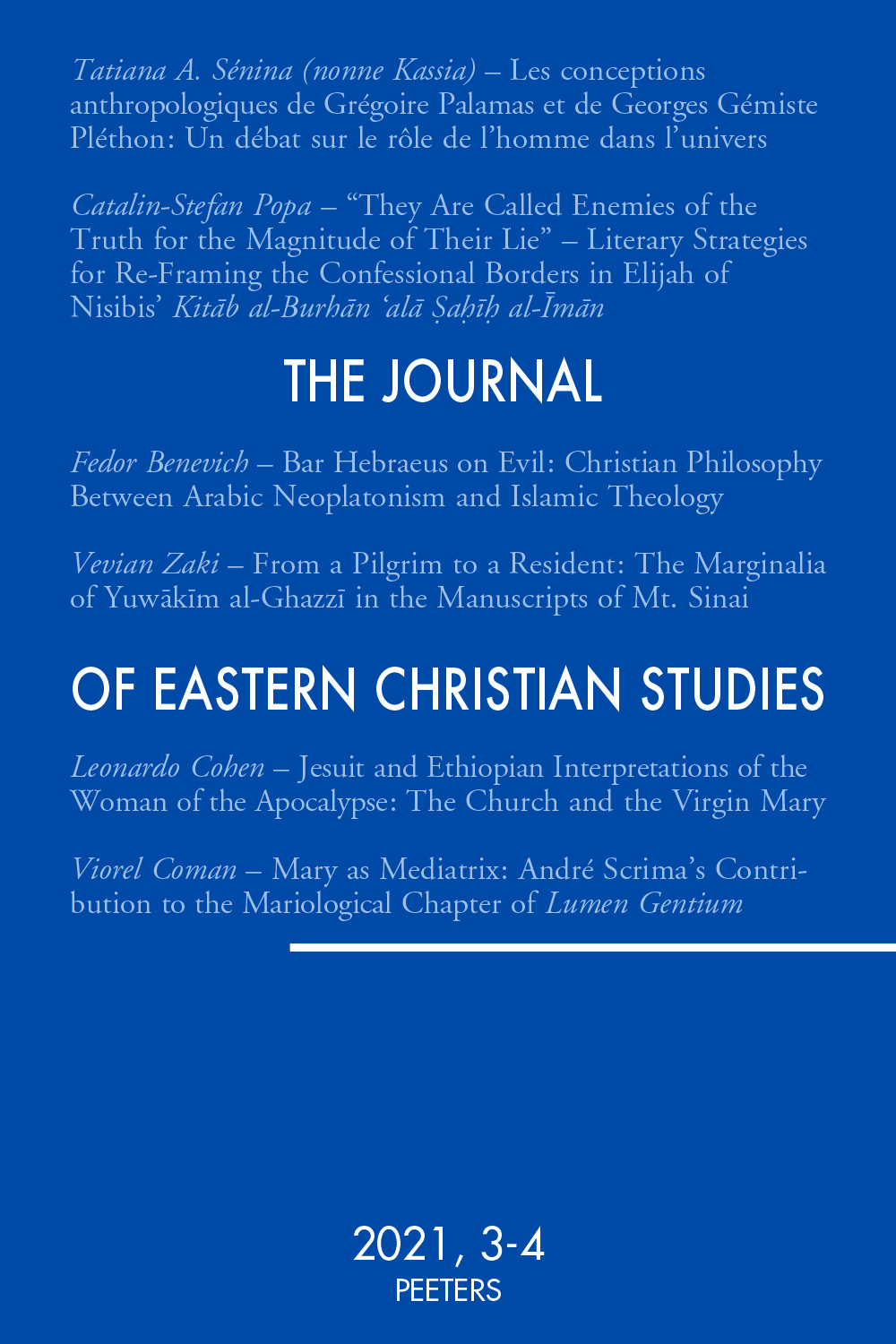 previous article in this issue previous article in this issue | next article in this issue  |

|
Document Details : Title: Changing Colours and Forms Subtitle: Theophanies in the Armenian Script of the Lord's Infancy Author(s): DORFMANN-LAZAREV, Igor Journal: Journal of Eastern Christian Studies Volume: 68 Issue: 3-4 Date: 2016 Pages: 349-381 DOI: 10.2143/JECS.68.3.3191691 Abstract : This chapter focuses on the Script of the Lord’s Infancy (LI), whose nucleus, an early apocryphal text about the birth and the infancy of Jesus, was introduced into Armenia in 588 by missionaries of the Syriac Church of the East. Although after the Œcumenical Council of Ephesus (431) the Armenian Church had officially condemned the strict dyophysite doctrine of the Church of the East and later even embraced strict Cyrilline Christology, this new theological orientation could not be implemented overnight across the entire territory of Armenia. The reception and translation of that early apocryphon in Armenia witness to the enduring influence that East-Syriac tradition could still exercise there a century and a half after the schism occasioned by the Council of Ephesus. The complex history of its transmission reflects the great popularity that a Syriac apocryphon about the birth and the childhood of Christ enjoyed in Armenia over centuries. Echoes of various religious traditions that had coexisted in the Near East during the first centuries of Christianity reached Armenia through the LI. Some accounts of this apocryphon have parallels in the eighth-century Syriac Chronicle of Zuqnīn and in the Arabic Gospel of Infancy, which also derives from Syriac originals. In its actual recensions the LI bears traces of original theological reflection outside a formal ecclesiastical framework; no details survive of the circumstances or the process of its composition. It was never officially accepted by the Armenian Church, yet its esoteric motives may be found in hymnography, book illumination and hagiography. This text, which contains carefully elaborated narratives with numerous learned references, represents a junction between ancient Christological ideas – rejected, abandoned or overlooked by official Churches – and the actual forms of Christian devotion in the Syriac world and, subsequently, in Armenia, first under Zoroastrian and, later, Islamic rule. |
